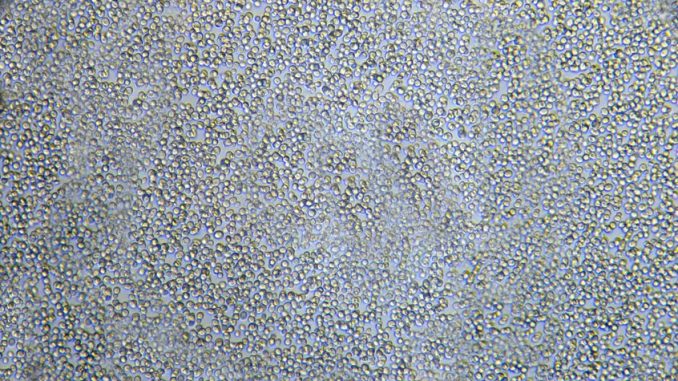
One of the fundamental processes of downstream processing of biomolecules is the separation of insoluble material from soluble material. It is regularly used in wastewater treatment to cause aggregation of particulates in the early phase of water treatment.
In most cases, a chemical coagulant is added to help or facilitate bonding between particles.
Flocculation is also a key step in the production of certain foodstuffs too. For example, egg white is a common flocculating and precipitating agent for clearing soup broths to produce consomme. In brewing, yeasts tend to flocculate as the fermentation progresses. It is also used as a clarifying step in removing haze from beer and wine.
According to the IUPAC definition, flocculation is “a process of contact and adhesion whereby the particles of a dispersion form larger-size clusters”. Flocculation is synonymous with agglomeration and coagulation/coalescence
Downstream processing
Downstream processing involves a number of steps which need to be completed following fermentation of a microorganism or following a particular bioconversion or processing step.
One of the early steps is the removal of insoluble material. This might commonly be just cells and any particulates in the fermentation medium. The next phase might be product isolation followed by purification and then a polishing step.
Flocculation As A Unit Operation
Microbial cells do not tend to clump or flocculate of their own accord unless changes occur to various compounds present on the external surface of their membranes. In a suspension the cells preserve their free state through electrostatic repulsion because the majority of the charges on the surface are due to anions. The overall charge on the surface is thus negative,
Microbial cells can be aggregated into microbial flocs. This improves their subsequent separation either by microfiltration where their size is increased or for centrifugation where the density difference between them is extended. In both cases, the separation is both quicker and much more well-defined with less smaller particulates passing through into the filtrate or retentate.
Flocculating Agents
Typical flocculating agents include ionic compounds such as aluminium sulphate and ferric chloride. Indeed polycationic species are ideal as coagulating or flocculating agents.
Cells however do not aggregate as conveniently as we would like because they are not perfectly spherical. Very often high molecular weight polymer bridges need to be used as flocculating agents.
Nonmetal coagulants are interesting biomolecules. As well as biopolymers, some natural compounds have specific action in bridging. The cactus Opuntia ficus-indica is an effective flocculating agent for bacteria suspended in water. Moringa oleifera seeds can also flocculate food safety microorganisms in drinking water such as Giardia and Cryptosporidium.
Polyethylene glycol (PEG) precipitation is an effective material for selective secondary concentration of viruses from eluents.
Bridge Flocculation
A number of polymers serve as bridge formers between different particles. The polymer can attach to one or several adsorption sites whilst the other part of the molecule is exposed into the bulk solution. Other particles latch onto these exposed portions of the bridge and become fixed.
Flocculation is increased by rapid stirring. Formation of flocs is also brought about by perikinetic and orthokinetic flocculation.
The Rate Of Flocculation Or Aggregation
The rate of flocculation depends on the probability of collision between particles, the likelihood of attachment that can occur during these collisions. There is also an assumption that once caught the bridge is not broken however if there is too much kinetic energy in the system, the particles can fly apart again and break these bridging links. The probability of detachment of particles from the aggregates is also an important consideration.
Leave a Reply